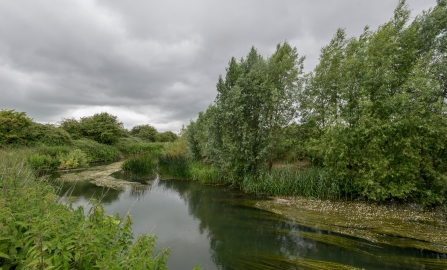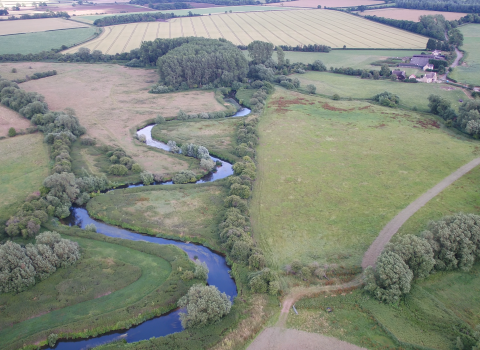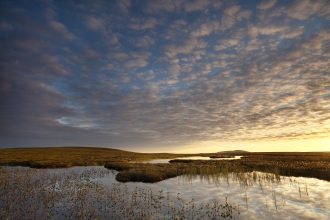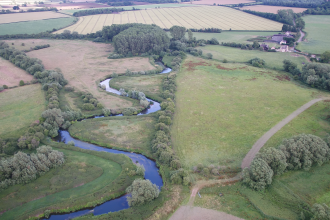Chimney Meadows lies at the heart of the Upper Thames Living Landscape and is managed by Berks, Bucks & Oxon Wildlife Trust. The Living Landscape schemes take a landscape-scale approach to wildlife conservation, by reconnecting habitats to create functioning landscapes. They involve landowners, farmers, councils, businesses, individuals and communities working together to make more spaces for nature, and enable more people to enjoy them.

Chimney meadows by Andrew Marshall Go Wild Landscapes
It’s this connectivity of landscape and people that allows Chimney Meadows to contribute so much to the surrounding countryside. The site has been restored from commercial agricultural land to a network of species rich traditional meadows and wetlands by BBOWT, supported by the Heritage Lottery Fund and the Biodiversity Action Fund.
The benefits to people and nature from this work far outweigh the costs of restoration, and have been estimated to be four times higher than those delivered from the previous agricultural operation.
Hundreds of lapwing and golden plover at Chimney Meadows Nature Reserve in winter. Allowing parts of the meadows that make up the farm to flood naturally creates a home for declining farmland birds. Photo by Louise King.
For example, in winter the 308 hectare reserve now acts as a sponge, soaking up excess water from the river Thames, and helping to prevent downstream flooding. This increased flood mitigation is worth an additional £250 per hectare per year when compared to its previous management.
Similarly, the 45 hectares of floodplain grazing, reedbeds and swamp are worth about £180 as they filter and absorb the nutrients and sediments carried in the river every year. These habitats naturally improve water quality, without the need for built infrastructure.
While it is a small piece in the puzzle, Chimney Meadows also plays its part in helping to regulate climate and lock up carbon. Now that the soils are undisturbed and the grasses and wildflowers are left to grow, the reserve is storing rather than emitting carbon every year - the equivalent of about 460 tonnes of C02 in the semi-natural grassland, for example.
When the meadow grasses are cut, they also provide green hay to help seed other restoration sites. With 90% of unimproved lowland grasslands having been lost since Roman times, creating any new patch of these traditional habitats is also extremely valuable for the species that depend on them - in fact the value of species diversity at Chimney Meadows has almost doubled since restoration work began.
Throughout the year Chimney Meadows is a haven for wildlife and people, who are now able to experience the diverse habitats and species across the reserve through improved access and an extended path network. Visitors can see the spring and summer wildflowers, and hear the call of waders, including curlew. These experiences have enormous cultural and health benefits, and with the shift from commercial agriculture to conservation management, they are estimated to deliver five times more value and benefits to society.
Restoration projects such as Chimney Meadows have the potential to bring extensive benefits to society, returning far more than is invested in them, and offer the opportunity to bring people together to create more resilient, functioning landscapes for our present and future well-being.



